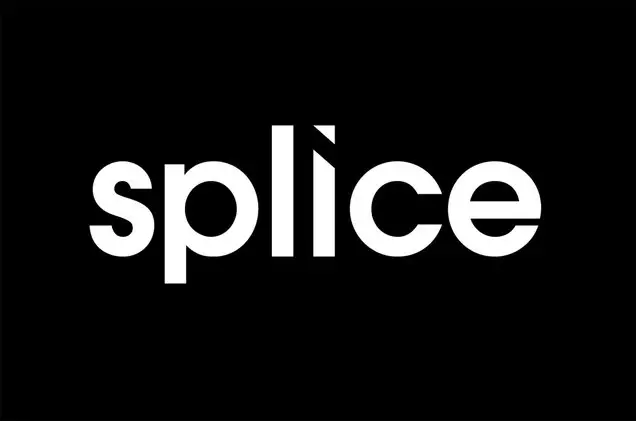Last Updated on September 26, 2020 by
Music production software has come a long way.
It’s pretty amazing when you think about what an average music enthusiast with a simple home studio can do today compared to the musicians, engineers, and producers of the 1950s and the 1960s.
Technological advancements and networking completely changed the recording process, even allowing enthusiasts and amateurs to take their original music to a whole new level.
Thanks to some of the online services, musicians are now able to have a completely different approach to writing, recording, or mixing music. Probably the most advanced of these services at this point is Splice Sounds.
In this review, we will be taking a closer look at this platform that’s been around since late 2013.
How does Splice Sounds work?
Here’s the TooLong;Didn’tRead version: Splice.com is to musicians what GitHub is to programmers.
While it’s not exactly easy to compare music to programming, both of these platforms allow collaborative projects and are a great resource for their respective fields.
Splice has a few of its different services.
Splice Sounds

First off, there’s the “Sounds” section that (according to the website) has over two million royalty-free samples, along with numerous presets, loops, and different sound effects. The service is pretty straightforward as you can just load any of the bought samples to your DAW.
We’ve talked at some length about splice sounds in our looplcloud review, where we compared these two pieces of software. The TL;DR version is that the sample bank of splice sounds is superior, whilst we found the loopcloud interface and features a bit more advanced.
After getting your hands on desired samples, you can easily tweak them the way you want to.
How and why do music producers use Splice Sounds?
The main selling point of splice sounds is that it’s an easy way to clear your samples without having to individually go through each sample you find in your record collection.
The process of clearing samples is a hassle and splice sounds eliminates that.
Additionally, it has a really clean sample library interface, a bunch of handy keyboard shortcuts, and an easy drag and drop tool for all major DAWs.
You can check the current sample pack catalogue here.
At the time of writing this article, the most popular sample packs include Black Milk’s Drum Pack, Barely Alive’s Essential Sample Pack, and more…
This is any music producers wet dream: pay a small fee and get more than 3 000+ sample packs forever.
With their subscription model, you’ll also get access to a bunch of other features, which we’ve outlined below.
Splice Rent-to-own

For this, you can use the “Rent To Own” section with the monthly payment plan that features different plugins and DAWs. You can either rent these plugins or purchase them on Splice for the retail price.
What’s also great here is that if you rent the plugin for long enough to pay off the full price, you get the full license for the product.
Even if you’ve been renting it for a certain period, you can pay off the rest of the price anytime. Or, if you prefer, you can buy the full license straight away.
In addition to plugins, Splice has its list of DAWs that can be bought through the platform.
Here is a list of plugins and DAWs available through the platform:
| Plugin Name | Plugin Maker |
|---|---|
| 1. Serum | Xfer Records |
| 2. Ozone 9 Advanced | iZotope |
| 3. VocalSynth 2 | iZotope |
| 4. Nectar 3 | iZotope |
| 5. Neutron 3 Advanced | iZotope |
| 6. V Collection 7 | Arturia |
| 7. Studio One Professional | PreSonus |
| 8. Ozone 9 + Neutron 3 Advanced | iZotope |
| 9. Decimort 2 | D16 Group |
| 10. MOVEMENT | Output |
| 11. Pigments | Arturia |
| 12. RX 7 Standard | iZotope |
| 13. Punchbox | D16 Group |
| 14. Neutron 3 Standard | iZotope |
| 15. Toraverb 2 | D16 Group |
| 16. Devastor 2 | D16 Group |
| 17. Ozone 9 Standard | iZotope |
| 18. Ozone 9 + Neutron 3 Standard | iZotope |
| 19. Circle² | FutureAudioWorkshop |
| 20. Zone | Audiaire |
| 21. Regroover Pro | Accusonus |
| 22. Parallels | Softube |
| 23. Beatformer | Accusonus |
| 24. D16 FX Bundle | D16 Group |
| 25. Nuxx | Audiaire |
| 26. Tekturon | D16 Group |
| 27. Antresol | D16 Group |
For more details and reviews on rent-to-own programs, check out this article.
Tip: You can rent any plugin for 3 days for free, so if you’re really curious about a certain plugin, go ahead and try it and cancel the subscription before the 3 days have passed.
Splice Studio- Your Cloud Music Backup

The “Studio” section of the service is what you would compare to the classic GitHub principle.
There is a decent number of DAWs that you can use with Splice and upload your project on the cloud either as a backup or for collaborative work.
For Windows, you can use FL Studio (at least 11), Ableton Live (at least 8.1), and Studio One (at least 4). As for the OSX: FL Studio (at least 20), Garage Band (at least 10), Logic Pro X, Ableton Live (at least 8.1), and Studio One (at least 4).
Of course, all this works with a specially designated Splice Studio app that works with your DAW and backs up the project on the cloud.
The whole thing requires some getting used to, but once you get a hang of it, the tool will become pretty useful for any kind of collaborative projects or backing up.
Whichever of the DAWs listed above you use, there will be a full explanation on how to back up the projects or just set them up for private collaborative use.
In case you’re using Ableton Live, GarageBand, Logic Pro, or FL Studio projects, you’ll be able to open this file through the Splice app.
Either way, the app will serve you as a sort of a specialized storage cloud service for your music projects.
Similar to platforms like Dropbox or Google Drive, only with unlimited space. Also, you’ll be able to browse all the Splice Sounds or plugins through the app.
Another of Splice’s strong points is that you’ll be able to backtrack all of the saved versions of a collaborative project. Whenever you post a new version of a project, you can access any of the older ones, including all of its files and presets.
You can also access and monitor some of the public projects and listen to the works on Splice through the browser or the app.
How much does Splice Sounds cost?
There are four payment options when you subscribe to the website. For buying or renting plugins, you use the websites dedicated credits that you pay monthly or annually. The packages are:
- $7.99 / month for which you get 100 credits per month
- $13.99 / month for which you get 300 credits per month
- $79.99 / year for which you get 100 credits per month for a whole year
- $139.99 /year for which you get 300 credits per month for a whole year
Credits can be used to buy plugins, samples, and more.
You can also opt to buy/rent individual plugins. For the full price list click on the button below:
Final thoughts- Is it worth it?
First off, the whole idea behind Splice.com is pretty innovative.
Just imagine what possibilities open up with a cloud-base project collaboration service. Also, you have a whole abundance of royalty-free samples and loops that you can use while creating your original music.
And there’s something for everyone’s tastes and desires. Whether it’s a full package of drum samples or an individual melody or just a simple effect ñ you’ll be able to find just about anything that you need in the Splice’s vast library.
In case you’re wondering whether Splice Sounds is worth it, we would say that it is. One of the biggest advantages of Splice.com that we would like to point out is that it’s fairly easy to use once you get a hang of it.
Of course, it all depends on the kind of music you’re making and what your general creative process looks like.
If you’re an independent solo acoustic artist, then you probably wouldn’t find much use within Splice, aside from a few plugins or an occasional sample.
But if your line of work is any kind of electronic or ambient music, any kind of video content creation for YouTube and other platforms, or anything that would require dedicated audio production, samples, and collaborative work ñ then our answer is yes.



